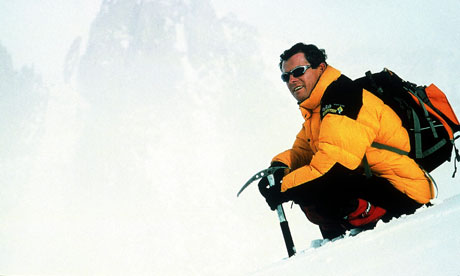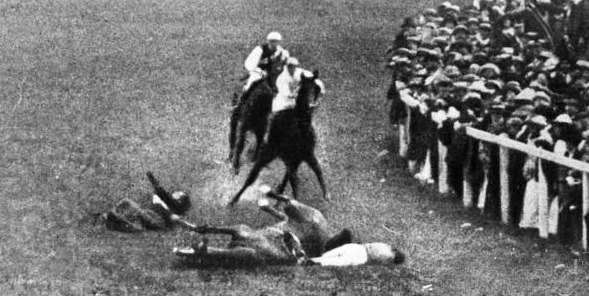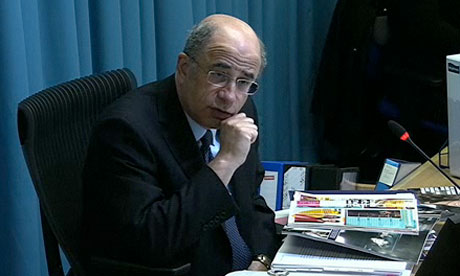Cheyne Walk seen from The Thames in the 1890's
In the late 1950’s , probably about 1958 when I was six years old, an aged great aunt called Kate,came to visit my grandmother and my great grandmother in Southampton. My great grandmother, Susy, was Kate’s sister . Great Aunt Kate was a very unusual character. I remember her wearing a long black dress down to her ankles, very Edwardian, and an elaborate wide brimmed straw hat. She seemed stern and didn’t smile much. Susy and Kate had been born in Ireland in County Limerick. Both had come to England for different reasons. Susy married William McGinn and came with him to England in his search for work in the shipyards of Newcastle upon Tyne. Kate came to England, a spinster, which she remained all her life, to work for one of the illustrious political families of this country, the Chamberlains. They were very wealthy and owned estates all over the country but politics ran through their blood. Neville Chamberlain was the Prime Minister at the outbreak of the Second World War. He negotiated with Hitler and obtained the Munich Agreement but this came to nothing. Churchill took over from him soon after.
The different branches of the Chamberlain family had many children and Kate was employed as a nanny for some of the children. One of their London Houses was a house in
Cheyne Walk. When I met Great Aunt Kate, she was retired as the nanny to the
Chamberlains, but over the years, working for them she had developed a very good relationship with the family.
They gave her a flat at the top of their Cheyne Walk house for her to live in
for the rest of her life. They looked after her, giving her presents and
treating her as one of their own. My grandmother used to a stay with Aunt Kate. At that young age of six I remember my grandmother telling me
how she used to go shopping with Kate in the Kings Road just north of Cheyne Walk,which
sounded very grand. She also spoke of a neighbour of Aunt Kate’s being an
artist. My grandmother never remembered the artists name but she told me how he
would paint his wife in the nude. This was very exciting news to a six year
old. My grandmother told me that it was fine. She believed there was nothing
wrong with the human body and it could be quite beautiful.
So Cheyne Walk always had this sense of a world that was
different, strange and exotic, inhabited by my Great Aunt Kate and artists
painting nude portraits. It was not until years later I discovered the true and
even more exotic story of Cheyne Walk.
Cheyne Walk is named after the Cheyne family who owned an estate on the site and were lords of the manor of Chelsea from 1660 to 1712. The first Georgian houses to be built in the walk were a row of beautiful Queen Anne houses some of which remain today. However even before the Cheynes the site of Cheyne Walk had it’s place in history. The home of the great Tudor chancellor under Henry VIII, Thomas More,was here. He lived in Chelsea with his extensive family. It was from the river side opposite Cheyne Walk that More was taken by boat to the Tower of London and his execution on Tower Hill. On the site of More’s great house, in Beaufort Street, there is now the Catholic seminary for the diocese of Westminster called Allen Hall. It has a modern 1960’s designed chapel next door to it. Just round the corner, in Cheyne Walk is a magnificent, coloured statue of Thomas More positioned in front of Old Church.
Cheyne Walk is named after the Cheyne family who owned an estate on the site and were lords of the manor of Chelsea from 1660 to 1712. The first Georgian houses to be built in the walk were a row of beautiful Queen Anne houses some of which remain today. However even before the Cheynes the site of Cheyne Walk had it’s place in history. The home of the great Tudor chancellor under Henry VIII, Thomas More,was here. He lived in Chelsea with his extensive family. It was from the river side opposite Cheyne Walk that More was taken by boat to the Tower of London and his execution on Tower Hill. On the site of More’s great house, in Beaufort Street, there is now the Catholic seminary for the diocese of Westminster called Allen Hall. It has a modern 1960’s designed chapel next door to it. Just round the corner, in Cheyne Walk is a magnificent, coloured statue of Thomas More positioned in front of Old Church.
As you walk along Cheyne Walk it soon becomes apparent how
special this street really is. If
you start at the beginning, in the Royal Hospital Road near the Albert Bridge
with those fine early Queen Anne Houses; at number 3 Sir John Goss (1800-1880),
composer and organist at St Pauls Cathedral lived there. Also Admiral Henry
Smythe, who co-founded the Royal Geographical Society lived in the same house
at a different period. At number 4 George Elliot spent the last years of her life
and died there on 22nd December 1880.In the same house lived
at different times, William Dyce a Scottish artist who set up public art education
in Britain and he headed the Royal College of Art. Daniel Maclise, friend of
Charles Dickens , and a great Victorian artist lived at number 4 too. The most
famous occupant of number 5 was John Camden Neild a very wealthy recluse and
miser. When he died he left his considerable fortune to Queen Victoria.
At number 6, in 1767 lived Dr Domicetti. He spent £37,000 on
building brick and wooden structures in the garden. They were what were termed,
medicated baths. He treated thousands of people in his garden. At number 10
Cheyne Walk lived the great Welsh liberal politician Lloyd George, prime
Minister during the First World War. Number 16 was designed by John Witt. In
1862 Dante Gabriel Rosetti, Algernon Swinburne and George Meredith shared the
lease. Rosetti kept a small zoo in the garden, the main feature of which were
some peacocks. These were very noisy birds and disturbed the neighbours.
Eventually a clause was added to the lease of the house whereby noisy exotic
birds were not permitted. It was here at number 16 between 1871 ans 1881 that
the Pre Raphaelite brotherhood often met. They all had houses in the area.
Cheyne Walk and especially Cremorne Gardens at the far end of Cheyne Walk were
a source for obtaining Pre Raphaelite women to be used as artists models.
Holman Hunt met Annie Miller and Fanny Waugh, who he both married, at different
times of course, in the area of Cheyne Walk. Dante Gabriel Rosetti wooed Jane
Morris who was married to William Morris.
They were local girls, servants, shopkeepers daughters or perhaps prostitutes met in Cremorne Gardens. The Pre-Raphaelite look was born. Jane Morris, Lizzie Sydal. Christina Rossetti, Alexa Wilding, Fanny Cornforth, Marie Zambaca, Marie Stillman, marriages, divorces, affairs, illegitimate children, wife swapping, prostitutes, it all went on and paintings of the most gorgeous women were painted.
They were local girls, servants, shopkeepers daughters or perhaps prostitutes met in Cremorne Gardens. The Pre-Raphaelite look was born. Jane Morris, Lizzie Sydal. Christina Rossetti, Alexa Wilding, Fanny Cornforth, Marie Zambaca, Marie Stillman, marriages, divorces, affairs, illegitimate children, wife swapping, prostitutes, it all went on and paintings of the most gorgeous women were painted.
All the great and innovative poets, artists and writers of
the time met here at number 16. Charles Dickens disapproved.
Now, if you can pull yourself away from the allure of number
16, at number 17 lived, for a while, Thomas Attwood who was a pupil of Mozart’s
and was a composer and another organist at St Pauls Cathedral in 1796. At
number 18 was Don Saltero’s Coffee House established first in 1695. At number
18 lived James Salter who was the barber and servant of Sir John Sloane.
Chelsea Old Church built in 1157 comes next. The chapel to the south side was built in 1528 and was the private chapel of Thomas More. There is a gaudy painted statue of Thomas More outside of it.
Carlysle Mansions where Henry James died.
Further along is a relatively new block of flats built in the Edwardian period.
Henry James had an apartment here and died in his flat there. T.S. Eliot and
later Ian Fleming, the author of the James Bond books both had apartments in
the block. Next door to Carlyle Mansions is Cheyne Hospital for Children built
in 1880.Chelsea Old Church built in 1157 comes next. The chapel to the south side was built in 1528 and was the private chapel of Thomas More. There is a gaudy painted statue of Thomas More outside of it.
Thomas More outside Chelsea Old Church
On the pavement opposite is
a very elaborate street light. It is green in colour and has two little boys
climbing up the light column. It commemorates the building of Chelsea Embankment
by the engineer Joseph Bazalgette.
Two little boys climbing a lamppost to commemorate Bazalgettes Chelsea Embankment.
One of Whistlers sketches of the Thames
shows Old Battersea Bridge with Chelsea Old Church in the background.
Beyond Chelsea Old Church is Roper Gardens named after a son
in-law of Thomas More and then Crosby Hall stands on the corner of Danvers
Street. Crosby Hall was originally the hall belonging to Crosby Place situated
in Bishopsgate in the city. It was built in the 15th century for The Duke of
Gloucester who became Richard III. Shakespeare includes the hall in a scene in
his play Richard III where Gloucester is plotting. It was later owned by Thomas
More. In 1910 it was in danger of being demolished and a fund was raised to
have it moved, brick by brick, stone by stone to Chelsea and is now positioned
on the site of an orchard that was in the grounds of what was Thomas More’s
estate. In Chelsea it first became the dining hall of the British Federation of
University Women. It is now a private residence.
Moving on down from Crosby Hall is number 93 where Elizabeth
Gaskell was born on the 29th September 1810. She wrote Cranford and
North and South and was famous for her biography of Charlotte Bronte.
Elizabeth Gaskell was born here.
Numbers 96 to 100 were known as Lindsey
house where James Abbott McNeil
Whistler lived between 1866 and 1878. He was an American who settled in England
and painted very atmospheric paintings
almost impressionist in their influence. He coined the phrase, “art for arts
sake.” He is also renowned as a friend of Walter Sickert, the artist, who was a
possible suspect for Jack the Ripper. James Whistler was an influence on many artists of his
generation. Number 98 was once the home of father and son Sir Marc Brunel and
his son Isambard Kingdom Brunell. Two of the greatest and most famous engineers
of the Victorian period. Isambard Kingdom Brunell constructed The Great Western
Railway from Paddington to Bristol, and the steam ship, The Great Eastern.
At number 101 James Whistler lived when he first arrived in
London before moving to 96. Hilaire Beloc lived at 104 between 1901 and 1905.He
was a catholic and one of , “the big four,” along with GK Chesterton, H G Wells and George Bernard
Shaw.
Hillaire Beloc lived here.
Philip Wilson Steer, the great
artist lived at 109 between 1898 and 1942. J M W Turner lived at 119. Because
he was so famous in his lifetime he went by the surname Booth to try and keep
his anonymity.
Philip Wilson Steer lived here.
At number 120, near the end of Cheyne Walk, lived Sylvia Pankhurst, one of the leaders of the Suffragette movement. Her mother Emmiline and her two sisters,
Christabel and Adela were intelligent and brilliant and provided a strong advocacy for women’s rights. Their
influence was felt in America, Australia and even in Ethiopia.
At the end of Cheyne Walk is what remains of Cremorne
Gardens. James McNeil Whistler painted
many nocturnal pictures depicting Cremorne Gardens. It was a regular
haunt of the Pre Raphaelite brotherhood and some of their artists models were
first discovered in Cremorne Gardens. The gardens were set up as a rival to
Vauxhall Gardens situated on the opposite side of the Thames, on The South
Bank, but never became as popular.
More recently Mick Jagger and Keith Richards have lived in Cheyne Walk. Jane Asher, an erstwhile girlfriend of Paul McCartney lived in the street and arguably one of the most talented and flawed footballers ever, George Best, lived there too. Dylan Thomas is known to have drunk in The kings Head and Eight Bells, two pubs nearby.There are many houseboats on the Thames beside Cheney Walk. Artists and musicians live on these too.
House boats beside Cheney Walk
The Chelsea Physic Garden is also close by in Royal Hospital Road which abuts one end of Cheney Walk It was founded in 1673 by the Society of Apothecaries. It's purpose was to train apprentices in recognising flowers and their properties. It was positioned near The Thames at Chelsea because it was found that there was a microclimate there that enabled plants, not native to Britain, to prosper.


































